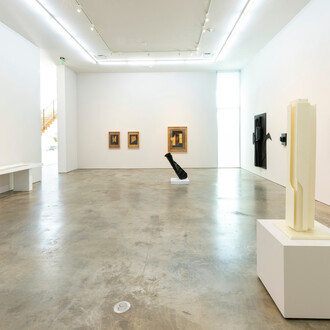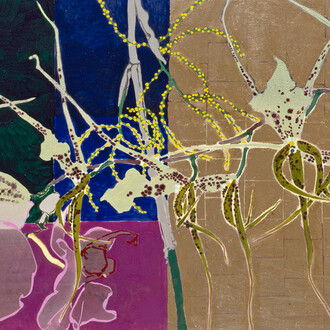Sicardi Gallery is pleased to announce an exhibition of rarely-seen prints by master artists from Latin America. Impressions | Abstractions explores the diverse ways gallery artists have used the medium of the print to develop new ideas and forms within traditions of abstraction. The exhibition will open with a cocktail reception on Friday, August 16, from 6-8 pm.
Impressions | Abstractions coincides with Print Matters Houston. As part of the ongoing Houston-wide celebration of printmaking, the gallery will also host a printmaking demo by local artist Marie Leterme, on Saturday, August 24 at 11 am. The demo is free and open to the public, and will include presentations of monograph and collagraph techniques.
Paris-based artist Carlos Cruz-Diez (b. 1923, Venezuela) is internationally recognized for his Physichromies, Chromosaturations, Chromo-interference Environments, and large-scale public projects in which he explores the theory and practice of color. His print series of Chromatic Additions are created with a variety of techniques, including silkscreen, etching, lithography, and digital printing, and they demonstrate the artist’s ongoing research about the behavior of color on a two-dimensional surface. In these works, Cruz-Diez places parallel lines of color equidistant from each other; the placement of the two colors creates the perception of a third color in the viewer’s eye.
Sculptor, engraver, draftsman, and kinetic artist Sérvulo Esmeraldo (b. 1927, Brazil) studied architecture, mathematics, geometry, and physics in São Paulo in the early 1950s. He spent the years 1957-1977 in France, where he took courses in metal engraving and lithography, regularly visiting the National Library to study works by Albrecht Dürer. His series of serigraphs Variations sur une courbe (Variations on a curve) from 1972-1973 are studies of the variations produced by line. Like musical themes, the curves repeat and develop in dialogue with one another.
León Ferrari (1920-2013, Argentina) created heliographs, lithographs, and digital prints marked by an almost calligraphic combination of line and text, and a deep concern with politics and language. Known internationally for his often-provocative social and political critiques, Ferrari made work that was highly critical of war, social inequality, discrimination (sexual, religious, and ideological), and abuses of power. His prints in this exhibition include lithographs made in 2008 and 2009 and heliographs made between 1980 and 2008, each of which expands upon his visual and political concerns and manifests his characteristically elegant draftsmanship.
Born in Germany, Gego (1912-1994) received a degree in architecture in 1938 before emigrating to Venezuela the following year. A sculptor, printmaker, and painter, Gego made works that address problems of architectural and sculptural space. Her Reticuláreas (“areas of tiny nets”), for example, use wire to create web-like installations and large three-dimensional forms. The exhibition includes a rare selection of Gego’s lithographs from 1966, which demonstrate her superb mastery of line and composition.
Julio Le Parc (b. 1928, Argentina) settled in Paris in 1958, where he began his investigations into abstraction, kinetic art, and public participation. In 1960, he co-founded the Groupe de Recherche d’Art Visuel (GRAV), an important avant-garde group of optical and kinetic artists, who made ephemeral public projects throughout the city of Paris. Influenced by Russian Constructivism, he made black and white paintings and serigraphs in the mid-1960s, using the limited palette to create a range of optical effects.
Time and movement are central concerns in the work of painter, sculptor, and kinetic artist Jesús-Rafael Soto (1923-2005, b. Venezuela), known especially for his Penetrables, sculptures which viewers can walk through and interact with. Upon moving to Paris in 1951, Soto befriended Yaacov Agam, Jean Tinguely, Victor Vasarely, and other artists associated with the Salon des Realités Nouvelles and the Galerie Denise René. His serigraphs from the 1960s and 1970s show the effects of his participation in this group of innovative artists, who also explored modes of perception.
After studying painting in Buenos Aires, Luis Tomasello (b. 1915, Argentina) settled in Paris in 1957, where he joined a group of artists researching optical illusion and kinetic art. Known especially for his Atmosphères chromoplastiques, white sculptural pieces which cast changing patterns of light and shadow, Tomasello has worked in print media throughout his long career. His most recent series of lithographs make use of color to create subtle shadows and reflections.



















